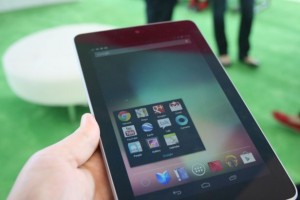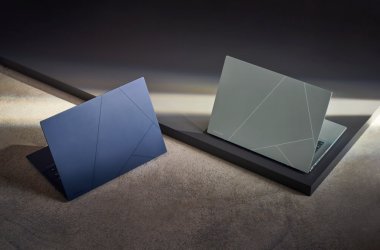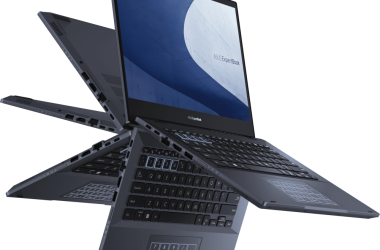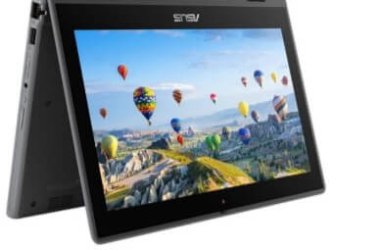The Google Nexus 7 tablet was launched to much anticipation earlier this year. Since the original Nexus phone, Google has held this range of devices up as a showcase of the Android OS potential.
While Google will no doubt get most of the glory for the Nexus 7, the tablet is manufactured by Asus. The Taiwanese technology giant has created arguably the two best Android tablets to date, the Transformer and Transformer Prime, and now with the Nexus 7 can add another home run to its tally.
The 340 gram body of the Nexus 7 is slightly larger than a paperback book. Passing it around the office several comments were made on how light it was. There was however a mixed reaction to whether this was a good thing or bad. Some thought being light was convenient, while others found it too ‘toy-like’.
I think the Nexus 7 is weighted well enough to make it substantial in your hand, without tiring you from long periods of use. The 7 inch form factor might not have been favoured by Steve Jobs, but it works well as an e-reader and media consumption device. The rubberised back along with its small perforated dots give it a very pleasant texture, similar to leather, and at the same time keeps your fingers from slipping.
With other budget Android tablets the first place that manufacturers look to skimp on cost is the display panel, which is usually the costliest part of a tablet. The Nexus 7’s 800 x 1280 pixel LCD screen has the colour quality and image crispness of devices twice its price. Colours and edges are very accurate, and the screen looks more like paper and ink than glass and LCD.
I’ve become used to the new iPad’s “retina” display, which has sullied my opinions of other tablets’ displays. Unfortunately the Nexus 7 is no different in this regard, but Google and Asus should be applauded for the fantastic screen at this price point.
The Nexus 7 is the first Android device with Google’s Android 4.1 (Jellybean) straight out of the box. Jellybean isn’t a revolutionary new operating system, but more of a refinement of the previous one (Android 4.0 Ice Cream Sandwich).
Android’s notoriously laggy system animations and clunky user interface is quicker and cleaner. It’s not as good as iOS or Windows Phone 7, but the trade off is a much greater level of customisation and a new notification system which gives a deeper level of information on updates.
With a 1 GB of RAM and a quad-core Nvidia Tegra 3 chipset, the Nexus 7 packs firepower comparable to high end Android tablets and the iPad.
Running a dozen or so of my essential apps (not at the same time) I didn’t encounter a single force close error. Even when I did tackle multitasking, I found the system ran as smoothly as it did with a single app going.
Searching through online forums I found out there are some apps not supported by the Nexus 7. The CNN News app is a prominent example which just refused to work for this reporter. This is probably a temporary issue until developers start pushing out updates for Jellybean, but it would pay to look online to see if your essential apps are all supported before purchasing this tablet.
I didn’t have the Nexus 7 for my usual one week review period, so my views on its battery life should be taken with a grain of salt. In general the experience was good. I would get eight hours of usage from a full charge when spending a lot of time browsing, viewing images, running apps and watching YouTube videos. I could squeeze up to nine hours if I contained myself to mostly browsing websites.
There is no 3G connectivity on the Nexus 7, so if you want to browse the web you’re limited to when you’re in range of wi-fi or a tethered phone.
The Nexus 7 has a 1.2 MP camera capable of recording video at 720p. The quality of the video is best described as “good enough”. It’s good enough for Skype calls with family and clients, but not good enough to record presentations or video for web.
SPECS
Dimensions: 198.5 x 120 x 10.5 mm, 340g
Display: 800 x 1280 pixels, 7.0 inches IPS LCD
OS: Android 4.1 (Jellybean)
CPU: Nvidia Tegra 3 quad-core 1.3 Ghz, 1 GB RAM
Storage: 8 GB / 16 GB
Price: $440






